My paid subscribers saw this post back in February but now it’s available for everyone.
The day dawned bright and blue and clear. It was one of those early June mornings which remind you what summer can be like and, therefore, how lucky you are simply to be alive. The church bells of St. Lawrence’s Church rang in the new morning, as they would have done when Sir John Chester woke up here at Chicheley Hall in 1717 and first heard the six bells chime.
When this hotel was a family home I imagine groaning breakfast sideboards loaded with kedgeree and devilled kidneys. Today it’s more individual sachets of Alpen and grapefruit segments but breakfasting in its wood-panelled dining room with its long windows letting in the early sunlight still seems a grand affair. I crunched down the gravel drive after breakfast and headed to the village of Cosgrove. Above me, the powder blue skies had just the tiniest gossamer wisps of high-altitude cirrus cloud. It was going to be a fine day and, with just the slightest breeze, it was already shirt-sleeves warm by eight am.
There was only one reason for me to be in the village and that was to walk along the canal. I had no specific destination in mind for the walk but on a warm day with tiny cumulus clouds just starting to bubble up and nowhere else in particular to be, there aren’t many better places to be than alongside a stretch of water.
The canal here is part of the Grand Union Canal and this stretch opened around 1800. Today at Cosgrove there are several narrow boats moored. A couple of hundred yards further on, by a lock and a small row of cottages, there’s another boat moored. It looks very smart in navy blue paint with a cream lined border, it’s called the Vimochana, which is Hindi for redemption. At the stern there are two Bearded Collies and a lady in a black and white flower-patterned dress. She’s wearing a straw hat with three pink and purple knitted flowers on it. Her white hair falls either side of her face from under the hat and looks just like the ears on her dogs.
Another couple of hundred yards brings me to an aqueduct over the River Great Ouse. Originally, in a rush to get the canal open, the river here was crossed using a series of locks: with five bringing the canal down to the level of the Great Ouse and four taking it back up again. The first of these is the one by which Vimochana was moored but the others have all gone, replaced by the Cosgrove Iron Trunk Aqueduct which was built in 1810 and opened on 22nd January 1811.
It is two huge iron troughs supported by a central stone pillar. Iron trough aqueducts had been in use further north for several years, having been pioneered by Thomas Telford. Northern canals tended to be much narrower, though, so casting these huge iron troughs for the wide Grand Union was quite a feat. They were made in Coalbrookdale in Shropshire and transported here by canal, obviously. The Great Ouse doesn’t look so great here and is quite a narrow river winding under trees and through green fields either side of me. As I cross the aqueduct I am crossing from Northamptonshire into Buckinghamshire.
Two swans are guarding five fluffy grey, half-grown cygnets on the towpath. The cygnets sit looking out over the water and their parents stand one either side, hissing and occasionally flapping at passers-by. One passer-by isn’t able to actually pass by at all, as the swans have taken an intense dislike to her golden retriever. The swans were going as far as nipping at the dog but it was amazingly calm and well-behaved. His owner was not quite so calm:
“You look fearless,” she told me with absolutely no proof at all, “can you help me get past? I’ve been stuck here for fifteen minutes.”
Even though fearlessness and getting dogs past angry swans are not attributes or skills I had previously thought to include on my LinkedIn profile, I couldn’t refuse.
Despite a total lack of training and preparation for the task, it seemed to go well. I put myself between swans and dog and said things like: “Good boy, that’s good, okay.” Though it wasn’t certain whether I was talking to the dog, the swans or myself. Anyway this, apparently, is the way to get dogs past swans and you are now fully trained and prepared should the situation ever arise. However, you should note that I only absolutely guarantee success if it is this dog that you are attempting to get past these two swans. Any other combination and you’re on your own.
On the far side of the canal now there appear dozens and dozens of wooden crates stacked two or three high along the bank for a hundred yards. Then there’s some kind of warehouse and a scatter of industrial units on a little wharf. I have arrived in Wolverton.
Aerial photographs of Wolverton taken just after the end of the Second World War show the streets of Victorian houses that are here still. All in orderly rows with fine, upstanding names like Windsor Street and Oxford Street. It was bigger than the tiny village of Milton Keynes which lay a little over four miles away over open fields. Today you could walk on pavements right into the centre of the new Milton Keynes as Wolverton was subsumed into the new town in the late sixties.
Wolverton’s history goes back way further than that and further than the Victorian terraces. Today Wolverton Park may be the place where Milton Keynes begins but the lumps and bumps in the grass here betray the existence of a much older Wolverton. They are the remains of a medieval village and you can see traces of the ridge and furrow ploughing in the neighbouring fields. The only thing which remains above ground is the Saxon Holy Trinity Church which sits next to the site of a Norman motte and bailey castle; probably built by William the Conqueror’s mate Manno the Breton. He was the first Baron of Wolverton after the Norman conquest, being given this land, as well as a great deal more in the surrounding countryside and in Leicestershire, Northamptonshire and Hertfordshire. All this he was given for helping Bill come over from France and claim that he was now King of England. Not the way it works today, is it? If I pop up to Sandringham and kill whoever happens to be wearing the sparkly hat at the moment, they would not arrange my coronation.
The manor of Wolverton belonged to the de Wolverton family until Ralph de Wolverton died as a toddler in 1351. His big sister Margery then married John le Hunt. Their daughter, Joan, married John Longueville and the manor then passed back and forth between the Longuevilles and the Cheyne family, among others, until Sir Edward Longueville sold the manor of Wolverton in 1713 to John Radcliffe. John died the following year but the income from his estate in Buckinghamshire lives on as it paid for the construction and the upkeep of the hospital, observatory and library in Oxford which were named after him. The Radcliffe Science Library is still Oxford University's main teaching and research science library today. The Radcliffe Trust still have interests in some of the land around here, mainly under the Wolverton Mill Industrial Estate.
It was still a warm afternoon and I sat for a while on a bench looking over fields which had first been enclosed by Sir John Longueville in the early sixteenth century and where his grandson, Henry, had turned out a hundred and forty beasts who ate all of the grass, leaving none for the villagers’ animals. There’s a scattering of brown and white cows grazing here today, young bullocks, I think. They look up and then largely ignore me but one, who, from his ear tags I believe to be called 302543, comes over to have a closer look.
He’s mainly white or cream with few brown patches, including on his ears and over each eye. Two stubs of horns stick out of his head. His pink nose stretches out and he tentatively sniffs me. After shying away a few times he grows bolder and licks my knee and then my hand where it’s resting on my leg. His tongue isn’t smooth but ridged.
It’s kind of like being licked by an enormous cat but not one you’d want one on your lap. You also might be happy to let your cat go upstairs and maybe even sleep on your bed. This would not be a good idea with a cow. Cows can climb stairs but they aren’t able to get down again because of the way their knees bend. It would also take quite a lot of explaining as to why you had a cow in your bedroom. All in all, ridged tongue or not, it is better to not treat your cow like a big cat.





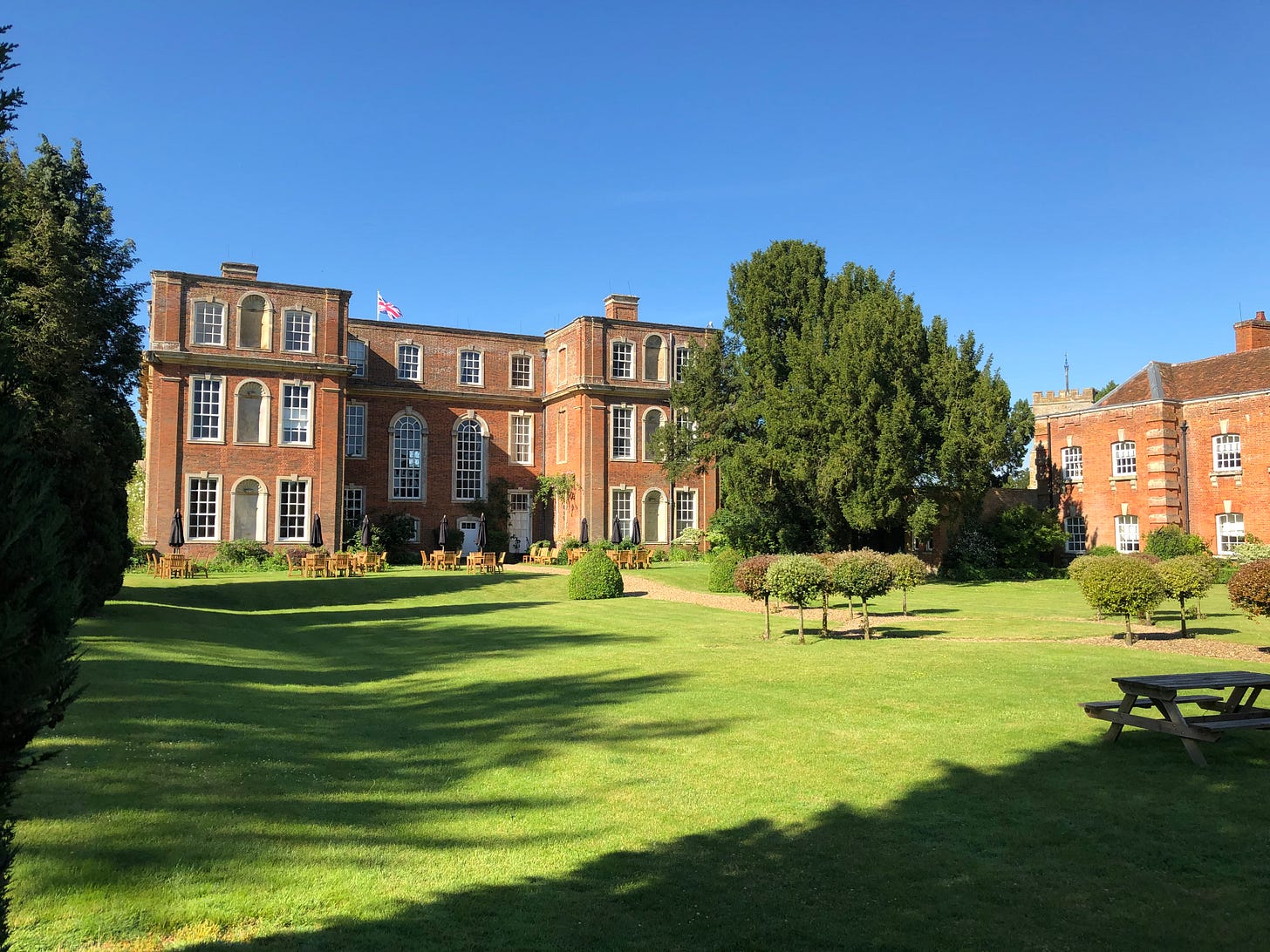
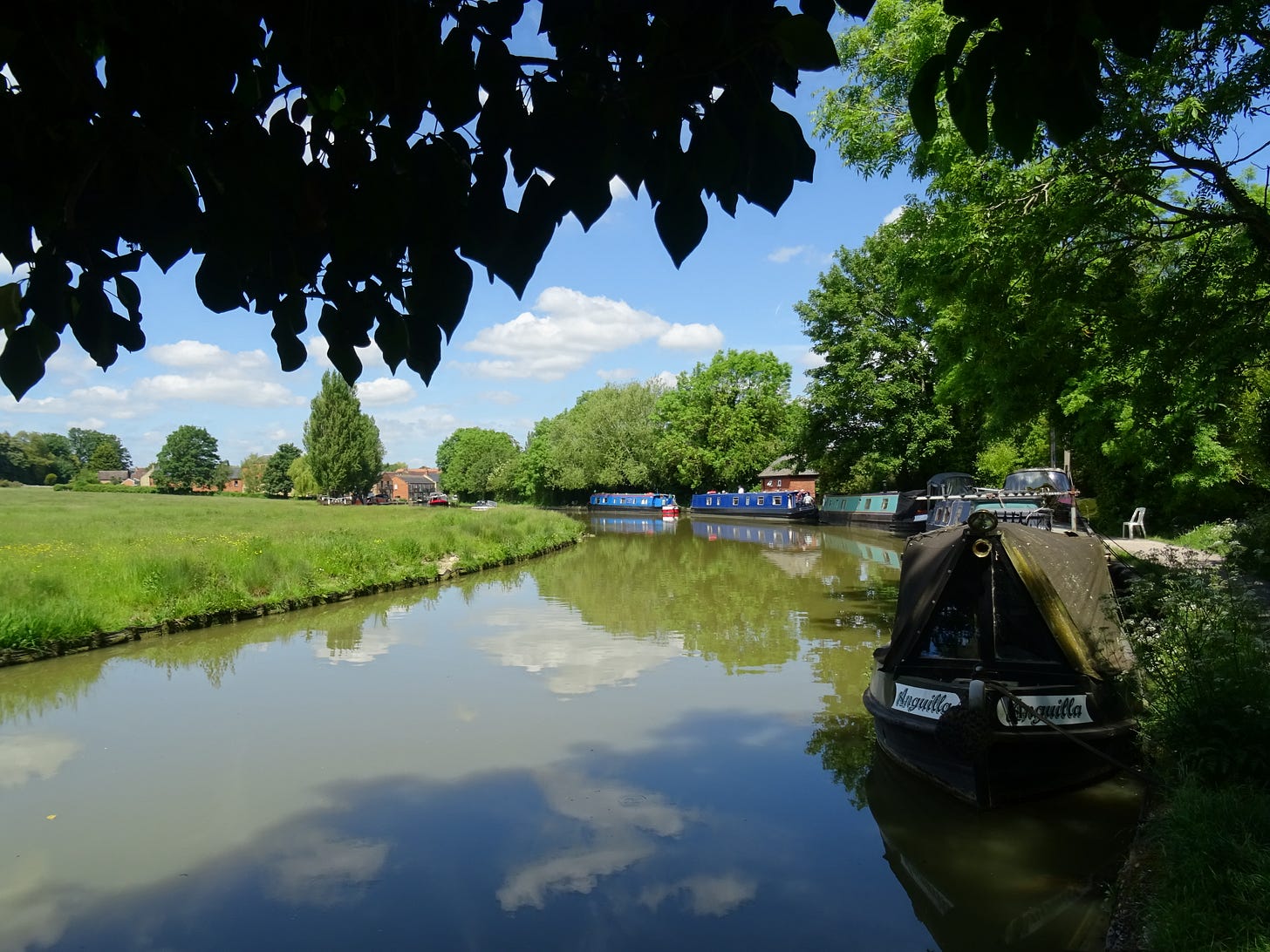
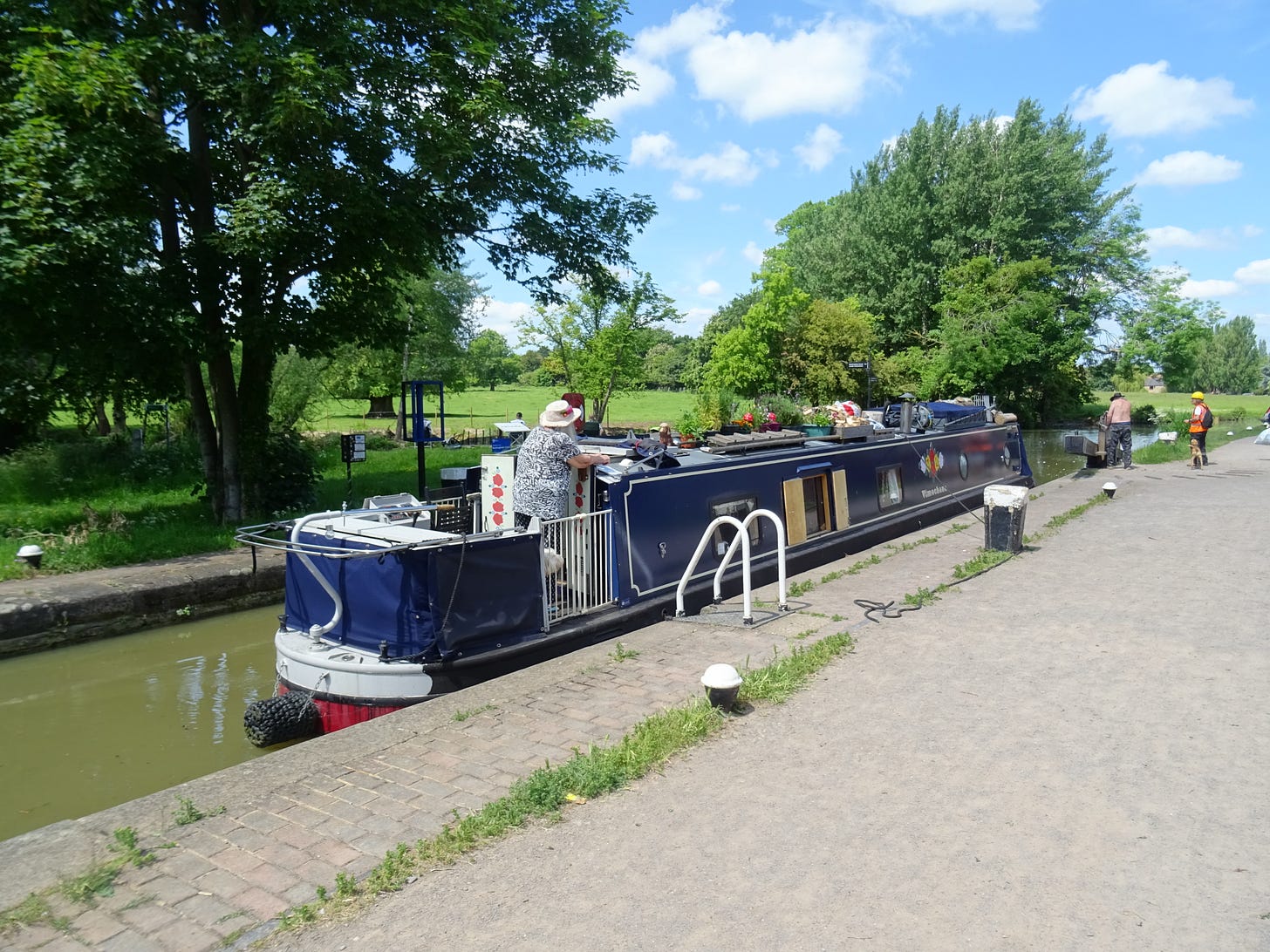
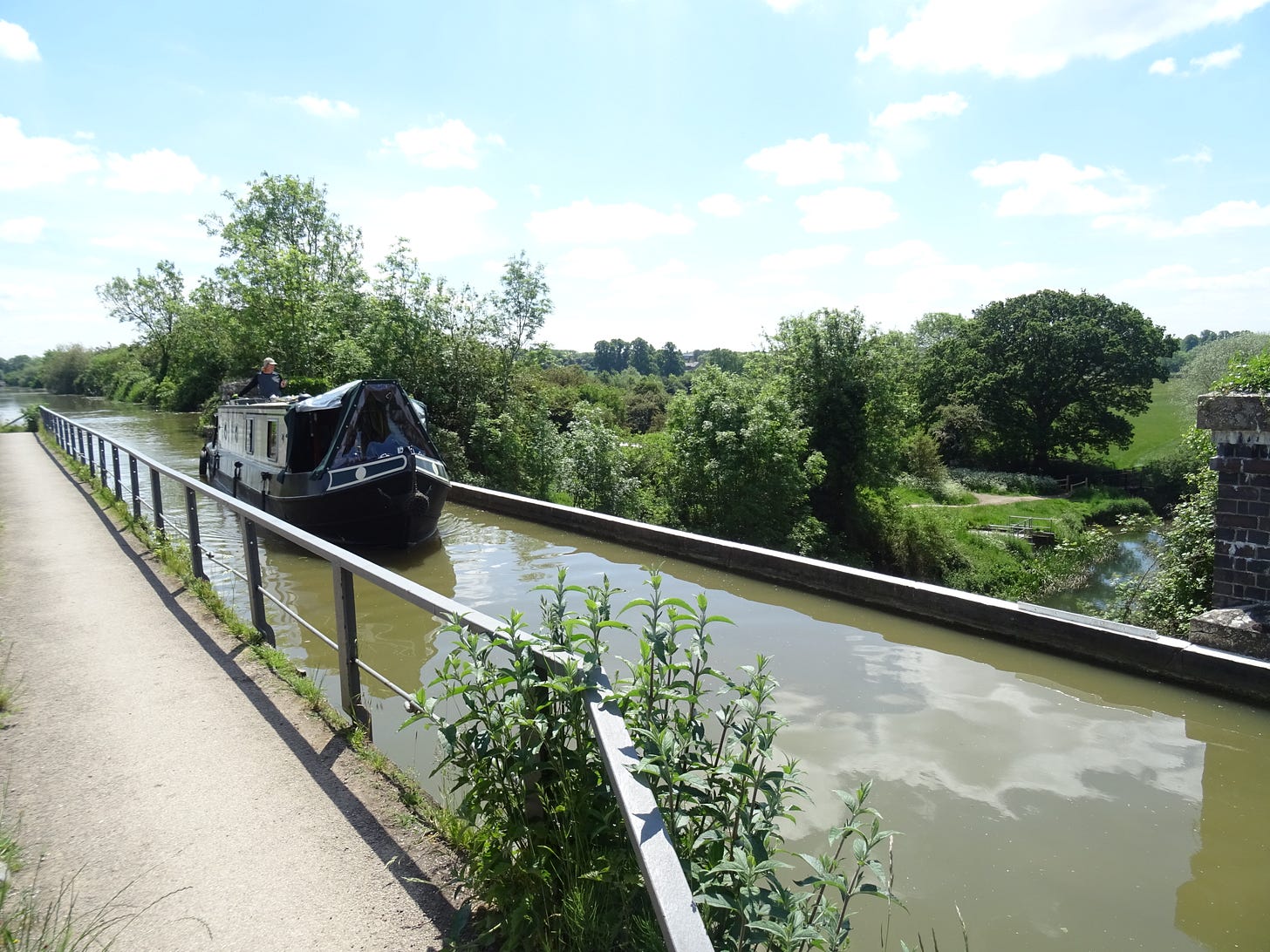
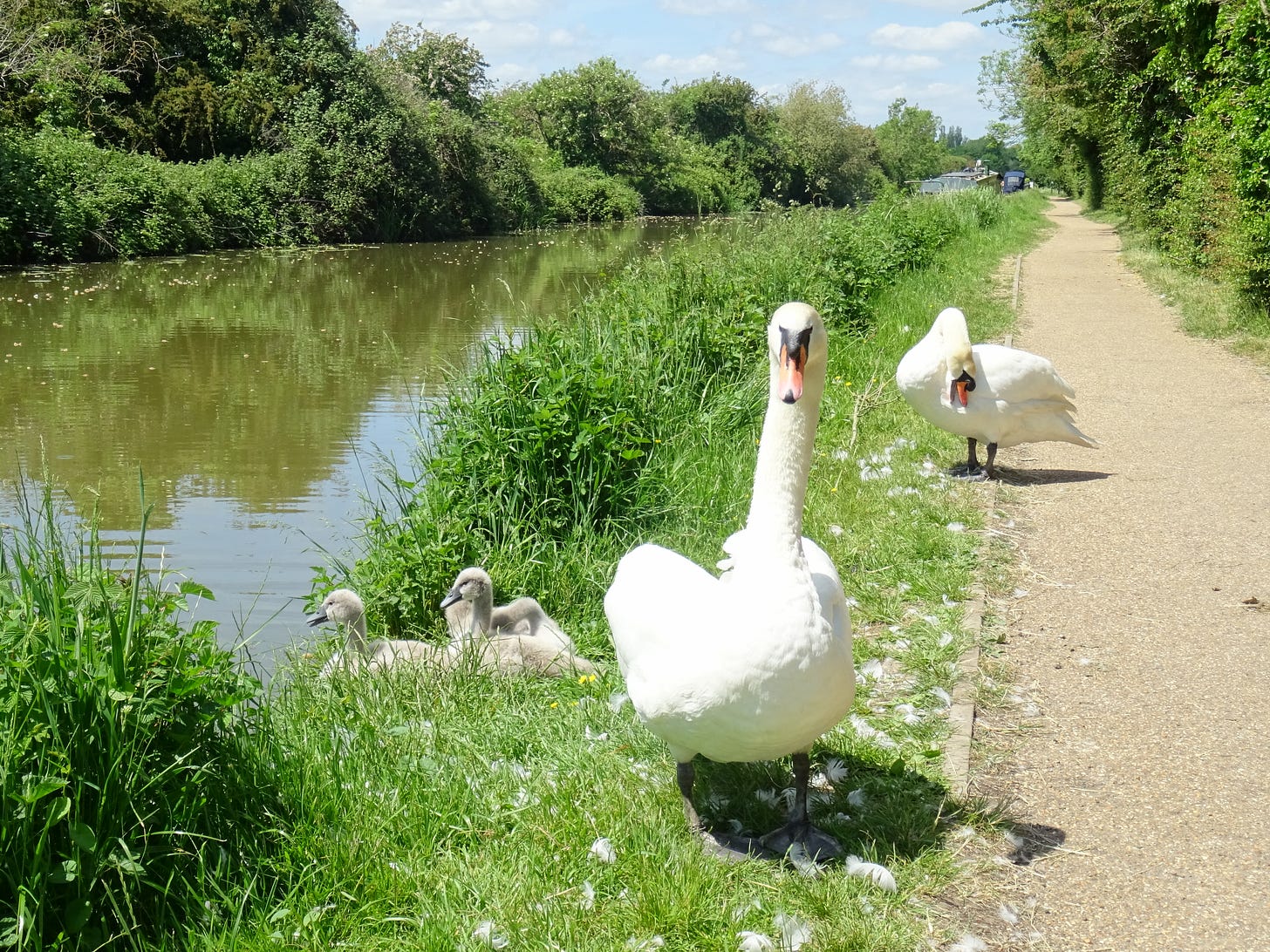

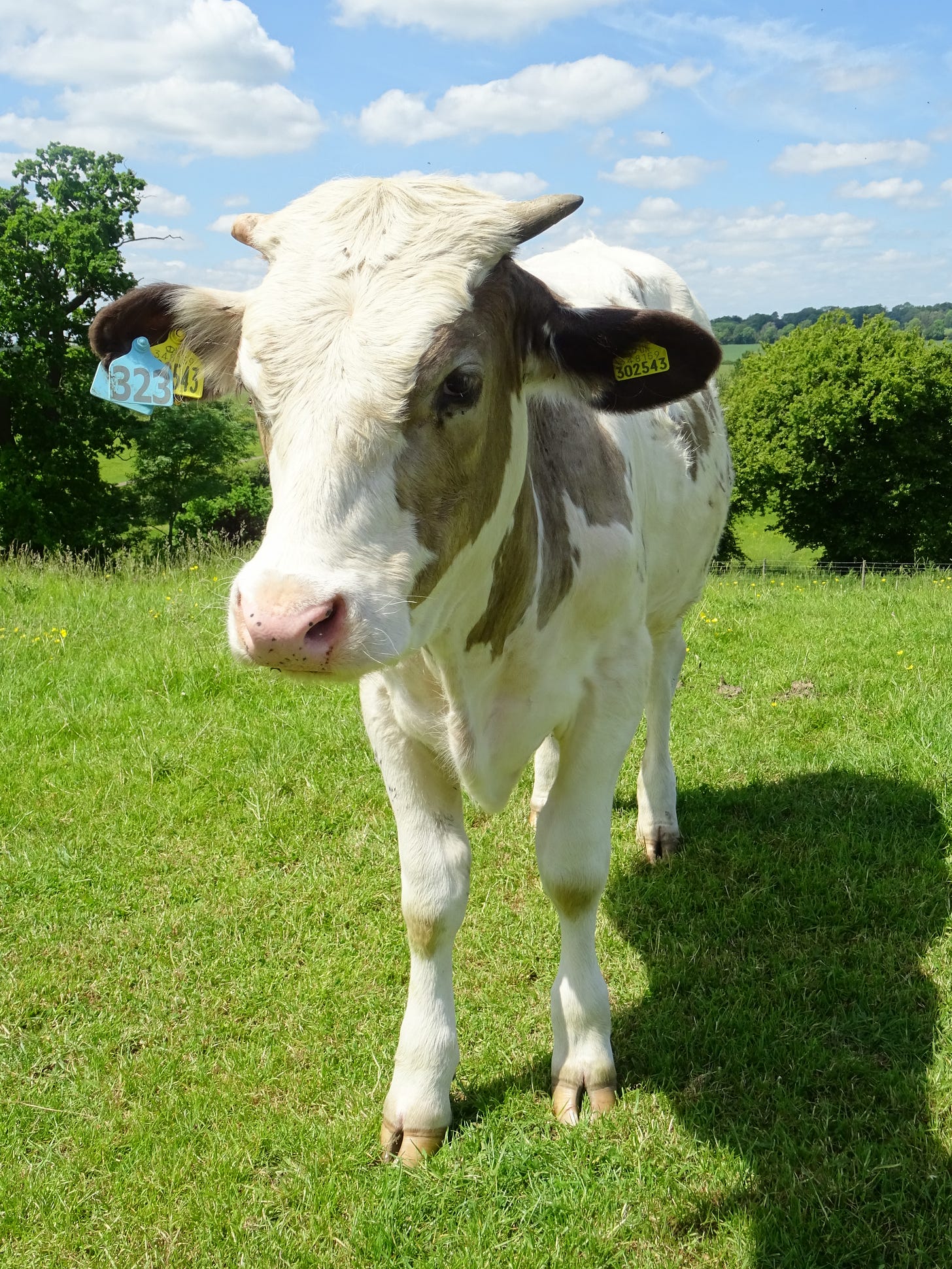
Just picturing a cow following you up the stairs over here. 😂🐄🪜
Fun post!